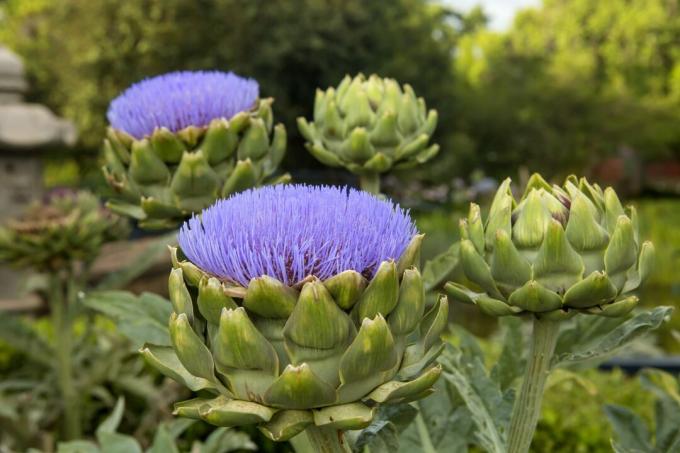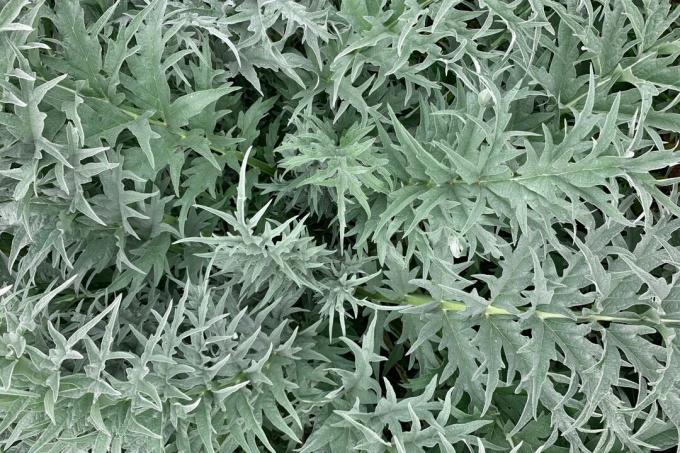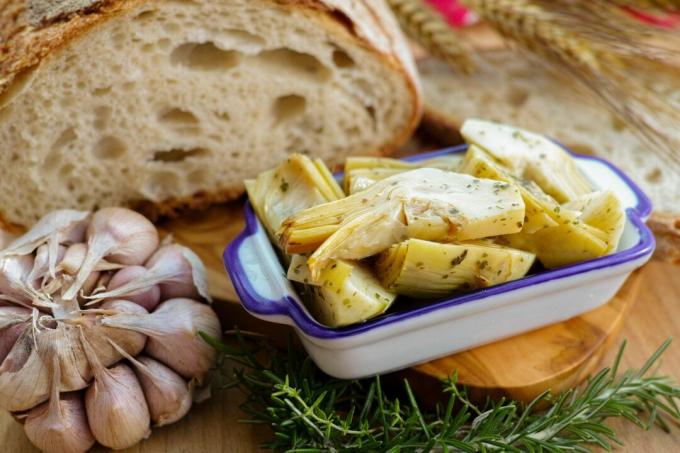Growing artichokes in Germany: In addition to origin and origin, we give tips on how to get from seeds and young plants to a rich harvest in your own garden.

Hardly any gardening lover knows that he loves artichokes (Cynara cardunculus var. scolymus) can also move in local latitudes. The artichoke is one of the thistle-like daisy family. Not only are the artichoke's budding inflorescences of high culinary value, but also the flowers are very popular with florists due to their high ornamental value. An artichoke plant is extremely useful in your own garden: delicious buds, beautiful, silvery, deeply slit foliage and magnificent flowers.
contents
- The robust artichoke: an insider tip for the hobby gardener
- Artichoke varieties
- Harvesting artichokes: in late summer it's time to “get the harvest!”
- Delicacy and medicinal plant at the same time

The thistle-like artichoke originally comes from the Mediterranean region and is still mainly grown in that area today. From there it quickly spread to Persia, what is now Iran, and to North Africa. According to ancient writings and wall paintings from pharaohs tombs, the artichoke is probably one of the longest cultivated vegetables. In the 15. In the 19th century the artichoke found its way to Italy and from there to France, Spain and Great Britain. The USA, Spain, Egypt, Italy and France are now the main artichoke growing areas. Read more in our article Artichoke: origin, origin and synonyms.
The robust artichoke: an insider tip for the hobby gardener
That Artichoke plants It is also worthwhile in home gardens. Seeds of cultivars can be purchased on the Internet. These are left to soak in lukewarm water for a few hours at the beginning of March. The seeds should then be sown about one to two centimeters deep. The germination rate is particularly high at a temperature of 20-23 ° C. With a height of about ten centimeters, the plants should be pricked out and after the ice saints in May the seedlings can be planted in the garden in a sunny place. A space requirement of around one square meter can be expected per plant. Artichokes need deep, nutrient-rich soil. It is therefore advisable to enrich topsoil with well-stored compost. More on the subject "What is topsoil?”Can be found in our special article. You can also use pre-fertilized organic soil like our Plantura Organic tomato & vegetable soil use.
Artichoke varieties
There are now stingless varieties. Cardy connoisseurs still prefer the varieties with spikes because of their aroma. In the end, everyone has to decide for themselves whether this justifies the additional work involved in cultivating and harvesting. These are the names of the most common Artichoke varieties:
- Green Globe: large-fruited variety with green petals
- Violetto Chiogga: small-fruited variety with purple and elongated buds; particularly frost-resistant
- Vert de Provence: small-fruited, but vigorous variety with many inflorescences
- Imperial Star: vigorous variety with relatively dark green foliage; large-fruited variety
Harvesting artichokes: in late summer it's time to “get the harvest!”
Artichokes can with some winter protection (fleece, Leaves, straw, etc.) are cultivated for several years in most areas. If the seeds are brought forward in good time, artichokes usually bear in the first year. In late summer, the flower buds appear, which should be cut off and prepared before opening. If you cannot process all of the flower buds, it is not a problem to simply let the buds bloom on the plant. Because the flowers of the artichoke are a wonderful ornament for the home garden.

Delicacy and medicinal plant at the same time
In addition to delicious buds and beautiful flowers, the artichoke plant has even more to offer. The artichoke was named Medicinal Plant of the Year in 2003. It is said to have a digestive and cholesterol-lowering effect as well as a positive influence on the heart, liver and bile.

Here is a final tip for a successful preparation: While the flower buds are cooking you always add a little lemon juice so that the leaves do not discolour and their green keep. The petals can be peeled off and the fleshy roots nibbled off. The most tasty part of the artichoke is the so-called heart. This consists of the flower base and the lower attachment part of the scale leaves.

Try the artichoke in your garden. They are robust against diseases, produce tasty buds and have enchanting blue-violet flowers What more could the garden lover ask for. Here you will find our best tips for the Cultivation of artichokes.
